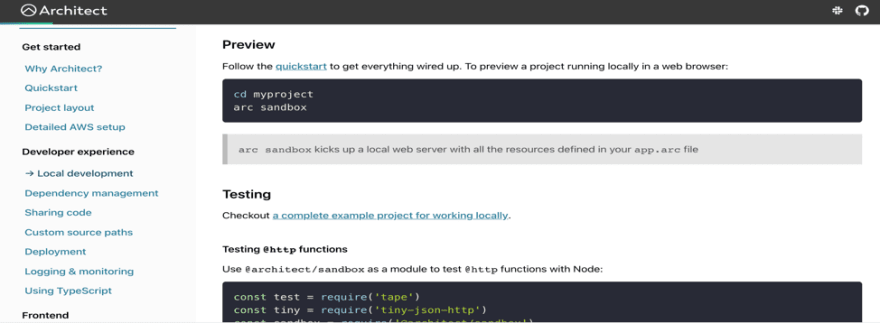Are you planning to adopt serverless architecture to proliferate your business productivity? If your answer is yes, you’ve come to the right place.
There are many platforms and frameworks available to integrate serverless in your tech stack. You might know a few frameworks and may have used some of them. But, choosing the one that can accelerate your product in terms of scalability and cost-efficiency is not easy.
Many large-scale enterprises like Amazon, Netflix, Nordstrom, Mindmup, etc., use this software architecture pattern and enjoy tremendous benefits such as faster development, security, and improved productivity.
Not only that, but startups are also leveraging this breakthrough technology. Using serverless for startups is a classic example of how organizations can shift their focus from infrastructure provisioning and management to building actual products.
Serverless Frameworks
It’s challenging to decide on one framework for your business product to integrate with your cloud platform provider. If you’re delving into a dilemma of what framework can benefit your business most, then fret not.
Let’s explore the following Serverless frameworks for 2021:
Serverless
With more than 39.9k stars and 4.8k forks on GitHub, this is the most popular framework available for building varieties of serverless applications. In addition, this toolkit lets you package and deploy apps to multiple cloud service providers like AWS, Azure, and Google Cloud Function.
Some of the features this framework offers include multi-language support, scaffolding, workflow automation, etc., and it is extensible via plugins.
Zappa
Zappa is a Python framework, which allows you to build and deploy any WSGI-compatible serverless and event-driven applications hosted on AWS Lambda. Using three simple commands - install, init, and deploy, you can easily deploy applications developed in Django, Flask, and other Python frameworks on AWS Lambda and API Gateway.
Architect
Architect a.k.a. ARC is the sophisticated OpenJS foundation project that is used to define serverless architecture. Low-code, offline workflows, and well-integrated local development are a few features of this framework. And what’s more, it allows you to quickly and concisely build, deploy, and manage AWS serverless infrastructure.
Sigma
Sigma is a cloud-based platform to provide support for serverless development in AWS and GCP. It’s a fully-featured IDE that entirely runs on the browser and lets you write and publish the code in real-time.
You need backend services for authenticating users and collecting analytical data. Other than that, it doesn’t require a backend to perform any other functions, as it is serverless itself. It is a real fast IDE with monitoring and debugging features and is worth trying for your serverless project.
Up
This feature-rich framework allows you to deploy serverless applications, static websites, and API gateways with infinite scalability. Moreover, you don’t need to learn new languages. Instead, you can start with your choice of frameworks like Express and Django and build your web product.
It supports multiple runtimes, includes Node.js 10.x, Golang, Python, and Crystal. Furthermore, you can quickly deploy applications without any difficulty using a single command. Structured logging, instant rollback, and encrypted environment are a few features of this framework.
Pulumi
It is an Infrastructure as Code (IaC) SDK that lets you create, deploy, and manage serverless infrastructure on any cloud-based platform. Fortunately, you can use your choice of language, tools, and engineering practices to build, deploy, and manage cloud-based apps. It also supports TypeScript, JavaScript, Python, Go, and .NET frameworks.
Pulumi is the best option for provisioning and managing infrastructure tasks on cloud service providers like AWS, Azure, GCP, and Kubernetes.
Conclusion
The market is flooded with lots of serverless frameworks, and most of them are designed to offer rapid development and deployment of a project. Unfortunately, though, each is meant for a defined task. Henceforth, deciding the appropriate one for your project depends solely on the project requirement.
I have tried to list out a few best serverless frameworks here. I hope this will help you in deciding the one for your serverless project. Which framework are you going to choose? Please let me know in the comments, or you can contact me for any discussion.













Top comments (2)
I would also throw our hat in the ring!
Serverless Stack (SST) is a framework for serverless that includes a local development environment for Lambda. It allows you to test and debug your functions without having to redeploy.
github.com/serverless-stack/server...
So you can do things like setting breakpoints in VS Code — serverless-stack.com/examples/how-...
Nice list!
Would like to mention two things while I'm here. 😊
1) Just in case, note that Pulumi can deploy not just serverless cloud infrastructure / services. It can deploy basically anything that your cloud provider offers.
2) I just wanted to add Webiny to the list, which is an open-source framework for building serverless applications, completely written in TypeScript.
In other words, it is a framework that enables developers to architect, build, and deploy solutions on top of the serverless cloud infrastructure, like AWS Lambda, Amazon DynamoDB, Amazon S3, and others.
With the framework, we also built a content management system called the Webiny Serverless CMS. It is free, open-source, and by default, included with every new Webiny project.
And BTW, we also use Pulumi for everything cloud infrastructure related, and so far it's working very nice for the project.
Some links:
webiny.com/
github.com/webiny/webiny-js
webiny.com/slack
Note: I work at Webiny 🙂